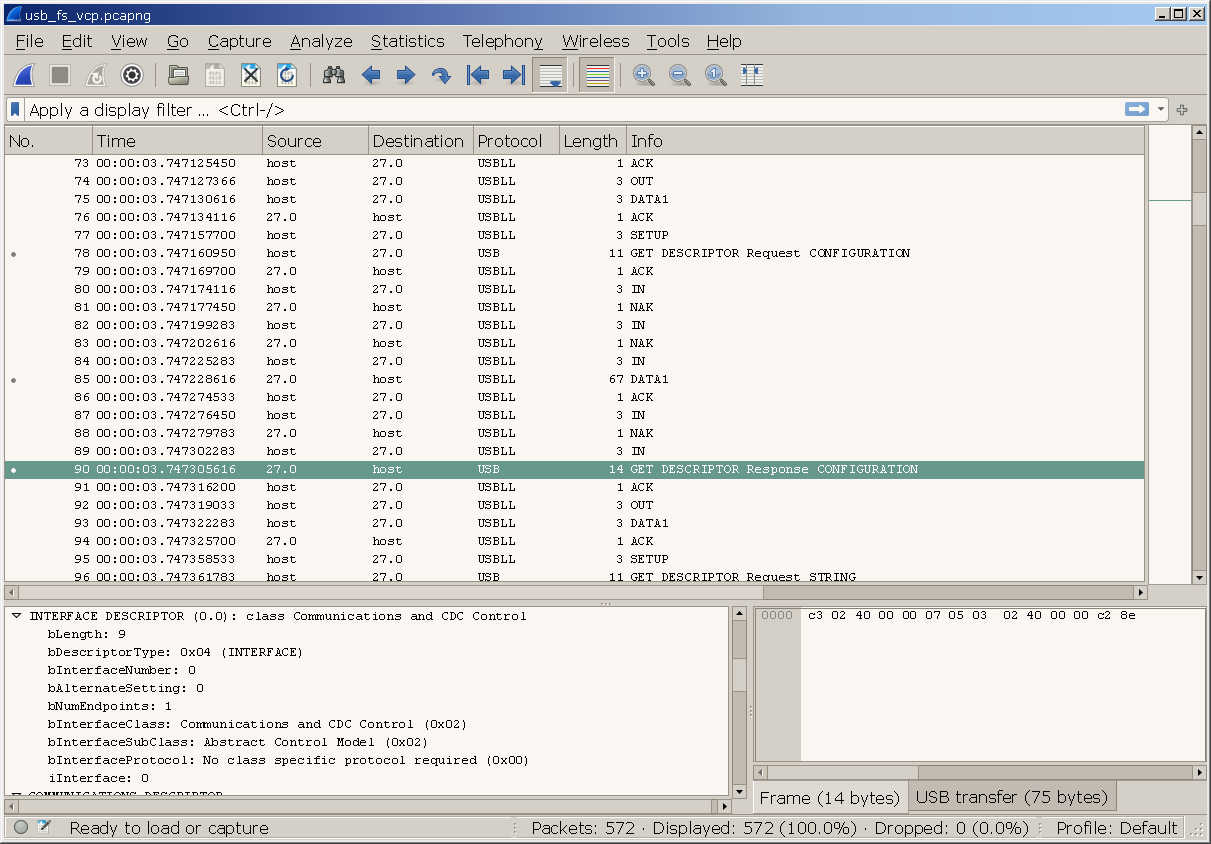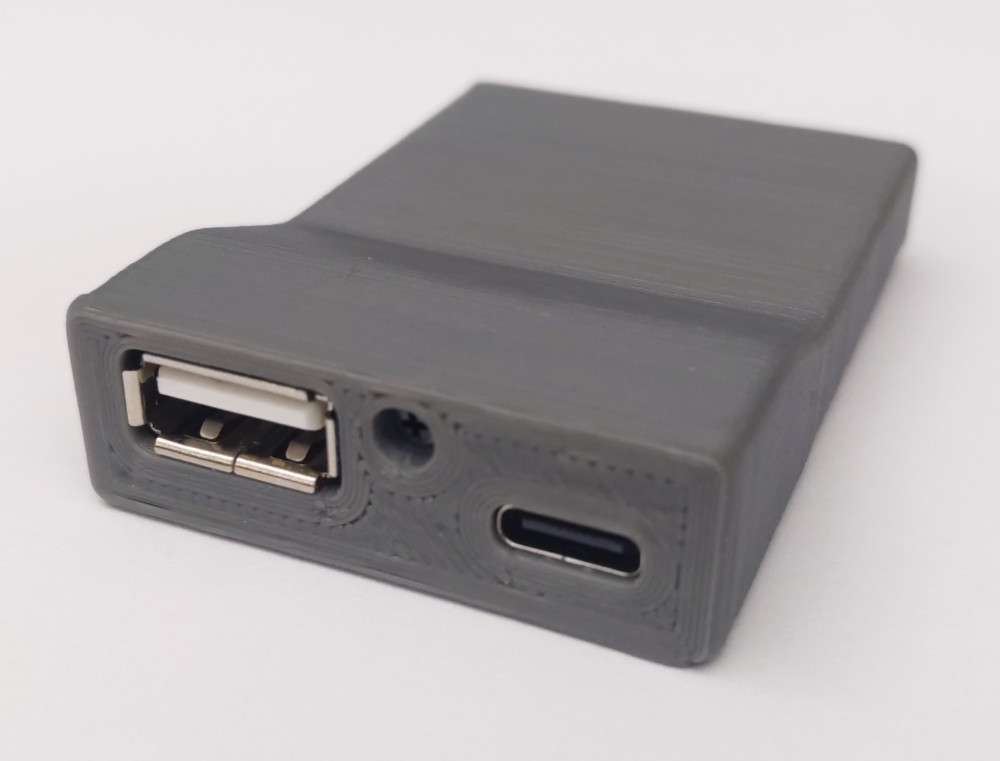This sniffer can be used standalone from a command line or as a plugin for Wireshark with direct control from the UI.
Either way, the capture is saved in a standard PcapNG format.
Here are some example capture files:
Note: You will need a recent version of Wireshark (v4.x.x). Older versions may not be able to decode USB payload, but should still show the raw data.
The sniffer is based around Cypress CY7C68013A MCU, Lattice LCMXO2 FPGA, and Microchip USB3343 USB PHY.
Prices and availability of ICs vary, but the total BOM should be less than $50.
LCMXO2-2000HC speed grades 5 and 6 were tested and the provided JED file was built for the speed grade 5, so it should work for both. Speed grade 4 is too slow and does not meet timing requirements.
Caution: Do not buy CY7C68013A from eBay or AliExpress, they all are either fake or sketchy in some way. This IC can be quite expensive from regular suppliers, but LCSC is a legitimate supplier and they often have it at much cheaper prices.
PCBs can be ordered from OSH Park or any other PCB manufacturer, gerber files are provided.
There are also STL files for the case.
This hardware does not require external programmers, both MCU and FPGA are programmed using a USB interface.
When a board with a blank EEPROM is connected, it would enumerate as an unconfigured FX2LP device.
Note: on Windows blank FX2LP will enumerate as an unknown USB device. Use supplied dummy INF file as a driver. It will associate blank FX2LP device with a generic WinUSB driver, so it would be recognized by the tools. Once the firmware runs, it would supply necessary descripptors automatically.
Note: on Linux copy 90-usb-sniffer.rules to /etc/udev/rules.d to set the permissions to access the device under a regular user.
The first step is to load the firmware into the MCU SRAM:
./usb_sniffer --mcu-sram usb_sniffer.bin
The device would reset and enumerate as a USB Sniffer with a dummy serial number. After that, program the EEPROM:
./usb_sniffer --mcu-eeprom usb_sniffer.bin
After resetting or power cycling, the device would enumerate as a USB Sniffer with a real serial number. The serial number is derived from the FPGA unique identifier, so if this step succeeds, it means that FPGA is also functional.
After that program the FPGA flash:
./usb_sniffer --fpga-flash usb_sniffer_impl.jed
MCU EEPROM can be reprogrammed at any time as long as it is running valid firmware.
In case the firmware gets corrupted, it is possible to run the MCU in the unconfigured mode by shorting BOOT and VCC test points (located near the EEPROM IC on the board) and resetting the device. You would need to repeat both steps for programming the MCU firmware to recover it to the working state.
The functionality and performance of the MCU and FPGA connection can be tested using the following command:
./usb_sniffer --test
You should be getting 40-50 MB/s. If the speed is significantly slower, connect the sniffer directly into the root USB port without intermediate hubs.
It is a good idea to run this test after significant changes to the hardware setup.
Pre-built binaries are provided for Linux and Windows.
To use with Wireshark, copy the file into the extcap plugin directory:
~/.config/wireshark/extcap on Linux, and
C:/Users/<user>/AppData/Roaming/Wireshark/extcap/ on Windows.
For Linux, make sure that the binary file has an executable attribute set.
After installation, refresh the list of interfaces in Wireshark and you should see "USB Sniffer" as one of the interfaces:
The settings icon next to the interface name (highlighted in red) will bring up the settings dialog:
Here you can configure the capture speed, empty frame folding, trigger type and limit the number of the captured packets (0 for unlimited).
After interface is configured, start and stop the capture as with any other interface.




